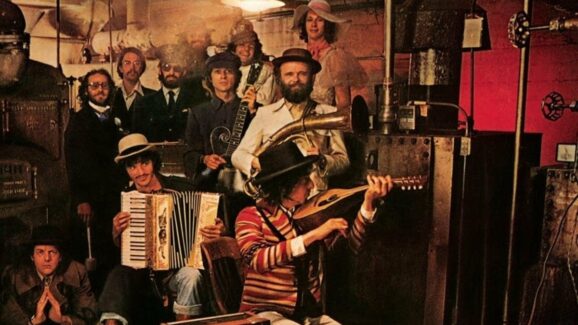This ambitious project pairs the versatile reedman Greg Abate with NEA Jazz Master, pianist and composer Kenny Barron across two discs of all Kenny Barron material, altered and reworked by Abate, and recorded with the stellar rhythm trio of Barron, bassist Dezron Douglas, and drummer Johnathan Blake at Rudy Van Gelder’s famed studio. Magic Dance: The Music of Kenny Barron includes both well-known and rather obscure Barron compositions. Abate researched and reworked Barron’s music, inserting his own ideas when appropriate, enhancing his arrangements with multiple sax overdubs, and, when the original was so good, it made sense to leave well enough alone. The project was challenging, multi-dimensional, and immensely gratifying. “I even scored a big band sax section (two altos, two tenors and bari) on ‘Innocence’ and ‘Voyage.’ The other 12 tracks have either one horn, or two horns in harmony.”
Obviously, Abate is not the first to use such overdubbing. Troy Roberts, Rick Margitza, and Dayna Stephens come to mind as well as others. Yet, this is somewhat daring in that not only does he modify and add to Barron’s compositions, but he also has Barron playing them. Each song received concentrated effort to mix and match saxes and flute, instilling a personal touch without losing the theme of the song. Says Abate: “Besides writing and varying intros and solo chord progressions, I tinkered with key changes, endings and tempos, all with the aim of making something happen. You may hear the head changes differing from the solo chords on many of these tunes. The hard part was to come up with the horn sound that fits each tune best.” Abate does a nice job of balancing Barron’s swinging repertoire with ballads, which Barron is so well known for.
Originally, the recording was set at Van Gelder’s for end of May but due to COVID-19, the session was postponed until September. In the interim, Abate re-visited and made changes to every song: harmonic choices, introductions, interludes, solo sections and endings. Most the time, the solo chords are different than the chords of the melody anyway, but those were rearranged as well. “The goal was always to make personal adjustments which compliment Kenny’s beautiful tunes. Several times I asked him if he minded that I was making so many changes and each time he would just say, “it’s cool. We will play them at rehearsal.” These sessions were done over three days, with overdubbing following.
This will give an idea of the variety, trying to stay in order of how the music unfolds. The swinging opener “Sun Shower” has Abate strictly on tenor though he was tempted to use multiple horns. “Cook’s Bay” features alto and flute. The sweeping “Golden Lotus” has multiple horn ensemble parts and features Abate soaring on his alto in his first solo and tenor on his second. He describes “Innocence” this way – “I did this on “Innocence” as well but without a soli, basically just adding the 4 extra horns on the A sections, and leaving the trio on the bridge. This one had soprano sax as the lead horn and alto 1, tenor 1 and 2 and baritone. It was fun doing these overdubs. During the mixing, I decided to play over the top of the 5 Saxes with a different chord pattern in the solo section, and I added a soprano embellishment soloing over the ending phrase!”
“Water Lily” is devoted to the flute and was changed from its original F sharp Minor to E Minor. “Sonya Braga” has a beautiful, flowing melody that Abate executes adeptly on the soprano sax, using different chords for the solo sections, but returning to the melody chords for the head out, thus providing another harmonic change before the close. On the fast-paced cleverly named for Bud Powell “Bud-Like,” he reharmonized the melody and added a second alto on the lead, breaking into a Latin swing as in Barron’s original, a true ode to bebop.
Disc Two opens with “Lemuria,” named for a continent believed until the 18th Century to have sunk in the Indian Ocean, and rendered much like “Golden Lotus,” with alto lead and tenor harmony in fourth intervals, as well as chords added to the solo sections. Blake shines here both in support and in has solo. “Concentric Circles” is a lovely ballad modal piece led by his soprano. “Rain,” featuring exceptional turns also from Barron and Douglas, and the title track have Abate on tenor interchanging with Barron on the heads. “Song For Abdullah,” written for South African pianist Abdullah Ibrahim, has Abate on just alto, with some different chords on the head and solo sections. On the blues, “And Then Again,” Abate features the alto with baritone harmony arranged with solos on both. It’s another with that classic bebop feel.
While Abate is stunning in his melodic sense and passionate delivery, the album of course features one of the iconic pianists of our time, Barron, alongside one of the most highly acclaimed rhythm tandems in jazz. Listen to Barron’s gorgeous introduction to “Rain” as just one example to appreciate his superior gift for balladry. This is one of the best straight-ahead jazz albums you will hear this or any other year – four superb masters, at work bringing you one that you surely return to often.










One Response
Hello Jim, Love the article. The time that you put into it and how thorough you were is fantastic. I couldn’t agree more. As I’ve spent multiple days listening multiple times its nice to know I’m not alone and crazy. Well maybe a little crazy~~~
Peace,
Don